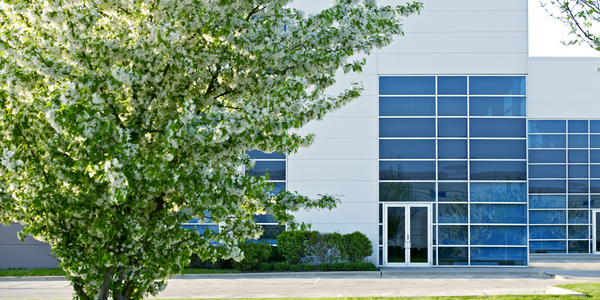Technology Category
- Sensors - Air Pollution Sensors
Applicable Industries
- Cement
Applicable Functions
- Product Research & Development
- Sales & Marketing
About The Customer
The customer in this case study is Dassault Systèmes, a 3DEXPERIENCE company. Dassault Systèmes is a world leader in 3D design software, 3D Digital Mock Up and Product Lifecycle Management (PLM) solutions. The company provides businesses and people with virtual universes to imagine sustainable innovations. Their solutions foster social innovation, expanding possibilities for the virtual world to improve the real world. In this project, Dassault Systèmes demonstrated its commitment to sustainability and innovation by partnering with Kengo Kuma and Associates to create 'Breath/ng', an air purifying installation.
The Challenge
Dassault Systèmes, a 3DEXPERIENCE company, was faced with the challenge of addressing climate change, one of the most significant threats to our world. The company aimed to use solution-based design to build a more sustainable future. To achieve this, they partnered with globally renowned architects and thought leaders, Kengo Kuma and Associates. The challenge was to consider the use of existing pollution-neutralising materials in the production of their creation. The goal was not only to create a sustainable solution but also to stimulate dialogue within the design community about the potential solutions that emerge when design and technology converge.
The Solution
The solution was 'Breath/ng', an air purifying installation capable of absorbing the equivalent of 90,000 cars worth of pollution. The installation was created from a series of single, architectural units, 120 hand-folded origami panels, and suspended from a single carbon fiber rod. This innovative build combined decades of architectural experience with traditional origami crafts, utilizing the 3DEXPERIENCE platform to test and explore the possibility of creating such a network. 'Breath/ng' not only served as a practical solution to a pressing environmental issue but also sparked conversations within the design community about the potential of combining design and technology to extend and improve the real world.
Operational Impact
Quantitative Benefit

Case Study missing?
Start adding your own!
Register with your work email and create a new case study profile for your business.
Related Case Studies.

Case Study
System 800xA at Indian Cement Plants
Chettinad Cement recognized that further efficiencies could be achieved in its cement manufacturing process. It looked to investing in comprehensive operational and control technologies to manage and derive productivity and energy efficiency gains from the assets on Line 2, their second plant in India.

Case Study
Digital Transformation of Atlanta Grout & Tile: An IoT Case Study
Atlanta Grout & Tile, a Tile, Stone & Grout restoration company based in Woodstock, Georgia, was facing challenges with its traditional business model. Despite steady growth over the years, the company was falling behind the web revolution and missing out on the opportunity to tap into a new consumer base. They were using independent software from different vendors for each of their department information and workforce management. This resulted in a lot of manual work on excel and the need to export/import data between different systems. This not only increased overhead costs but also slowed down their response to clients. The company also had to prepare numerous reports manually and lacked access to customer trends for effective business decision-making.

Case Study
Revolutionizing Construction Equipment Rental: A Case Study on ProsRent and ENO8
ProsRent, a startup that won the 'Best Financial Opportunity' and 'Best Pitch' at CodeLaunch 2016, aimed to revolutionize the way construction professionals source and rent heavy equipment. In the construction industry, project managers and contractors typically rent heavy equipment from supply companies. However, predicting inventory can be challenging, and finding the required equipment at the right time and place can be a hassle. If the preferred vendor doesn't have the required equipment, it results in wasted time and money in searching for it, often leading to higher costs due to non-preferred rates and increased delivery costs if the vendor is located far from the job site. Suppliers, on the other hand, desired access to a wider base of trusted renters that they didn't have to vet themselves and wanted to offer dynamic rental pricing based on demand and availability in their market. ProsRent's challenge was to produce a minimum viable product that was fast and first to market but also strong enough to engender loyalty and repeat business from the target market.

Case Study
AI-based Automation for Commercial Office HVAC: A Verdigris Case Study
Modern buildings are required to run longer hours, support a variety of end uses, and contribute to higher levels of economic productivity, leaving a thin margin for error. However, even the most advanced building and environmental control systems have failed to adequately support facilities and operations management. Buildings are often inefficient and the people using them are underserved. To meet occupant comfort and maintain cost and energy efficiency, a dynamic, AI-assisted approach is needed.

Case Study
Revamping EE's Legacy ERP: A Case Study on BT's Strategic Transformation
EE, even after its merger with BT, was operating its ERP estate on legacy infrastructure, hosted on the premises of a third-party supplier. This outdated system resulted in a volume-based operational model, higher time to market, longer delivery cycles, and unsatisfactory customer experience. BT recognized the need for a strategic transformation of these aging ERP systems and sought a partner who could proactively manage application services. The partner was also expected to handle development requirements associated with application management services, drive accountability, and ownership with a time and target-driven transformation of these services. BT's primary goals were to improve customer experience, reduce cycle time, and measure these improvements with precision.








